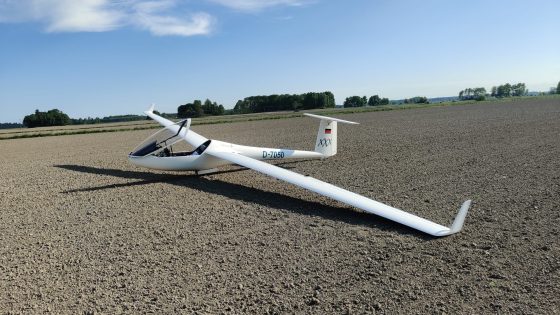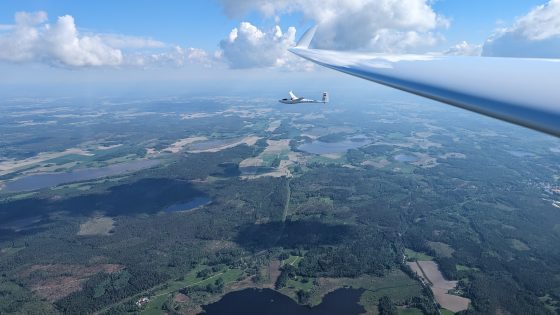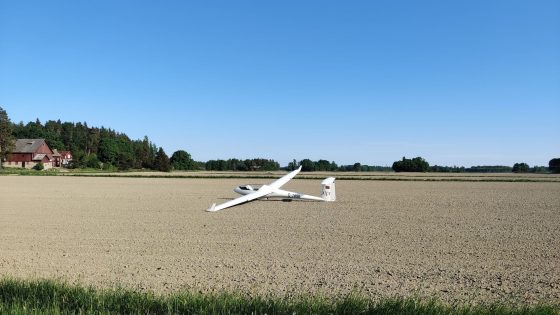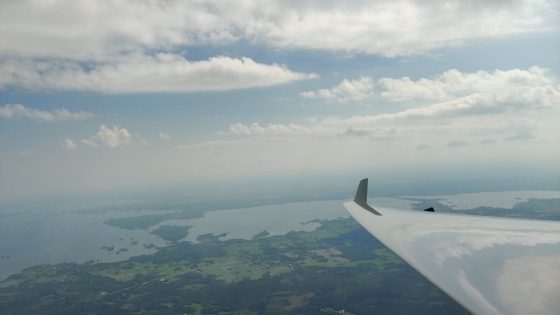Mosquito Winglet Review
| Pilot: | Wolli Beyer |
| Club: | Fliegergruppe Oerlinghausen |
| Airfield: | Flugplatz Oerlinghausen |
| Glider: | 303 Mosquito – SN 57, 1977 |
| Registration | D-7050 “XXX” |
Experience report: Mosquito with Winglets, D-7050
Last year I was able to purchase a “Glasflügel Mosquito”, which was repainted in 2021. As a “Glasflügel fan” with experience on H201, H 204, H301 etc., I was excited to see the flight characteristics and performance, also in comparison with other club class aircraft. During the first flights, my subjective feeling was that the aircraft wanted to be flown a little faster in the thermal and didn’t like the range below 85-90 km/h (38kg(m2).

It tended to tip inwards at slower speeds and I found the climb performance could be improved. Good aircraft performance, especially in competitions, is a determining factor for success. The gliding performance is an essential factor in relation to the climbing performance. It is not uncommon for a competition to be decided on weak days, when the last updrafts have to be cranked up on the weakest climb .
So, in addition to the usual sealing work, the idea and desire to install winglets quickly came up. Also in the opinion of competent pilots, the “old” profiles of the “15m” class, which are now successful in the club class, work better with winglets.

After discussions with Christian Streifeneder, who, together with his father “Hanko” as model supervisor, ensures support and thus the continued existence of Glasflügel aircraft worldwide, something quickly crystallized:
- The recalculation of a winglet requires a high level of personnel and financial effort, which is not possible in relation to the number of units.
- An alternative is to adapt the well-functioning winglets of the Glasflügel 304.
The implementation and approval as a “TN” still required the entire winter, so the winglets could only be installed at the beginning of May.
These fit very harmoniously into the overall appearance of the aircraft and fit into the wing contour with almost no gap. Perhaps one would have liked a slightly more “neo-ish” shape, but ultimately it is the effectiveness that counts, which was already proven with the 304.

Test flights carried out in mixed conditions showed:
- There is hardly any tendency for the wings to drop when taking off in aero tow
- Earlier separation
- Increased directional stability in straight flight
- Reduced circling flight speed by approximately 3-5km/h
- Subjectively improved climbing performance with reduced circle radius
- Reduced tendency to “tilt in the circular direction”.
- More harmonious turning behaviour
- Subjectively slightly changed speed ranges for the flaps:
– Until now, the “not intended” 1.5 position seemed optimal for cranking
– Now it went well in “L” about 78-85km/h with consistent climbs
Overall, a successful “update” of this aircraft, which has previously received little attention in the club class.
Wolli Beyer, Eskilstuna May 23, 2024



